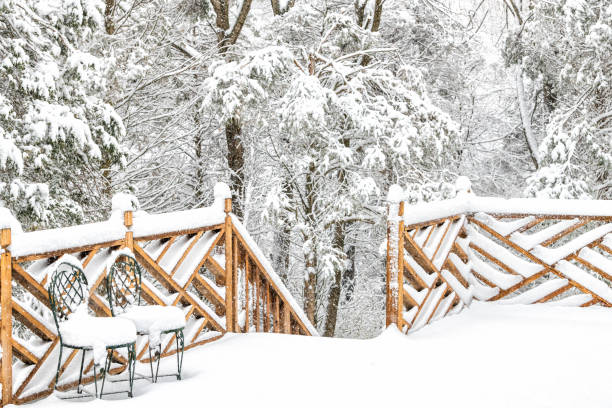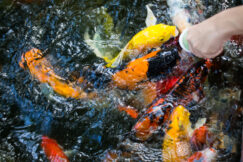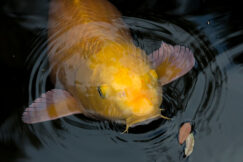Are you wondering if your koi fish can survive the cold winter weather? If so, then you’ve come to the right place.
This blog post will discuss what koi need to stay healthy in colder temperatures and how to ensure they’re comfortable even in cooler climates.
Koi Fish Tolerate a Wide Range of Temperatures
Koi fish can tolerate a range of temperatures, from 34 to 90 degrees Fahrenheit. This allows them to survive in their native waters even when the temperature drops during winter.
While they can survive this cold weather, it is important to remember that koi will stop eating once the temperature gets below 50°F. To ensure your koi survive the winter, you should provide a hole in the ice for oxygenation and continue to aerate your pond.
Additionally, you should not feed your koi when temperatures are below 50°F as this can lead to overfeeding and potentially freezing the fish. By taking these measures, you can ensure your koi remain healthy and safe during extreme temperatures.
Koi Stop Eating Below 50°F
Koi are cold-water fish and can tolerate a wide range of temperatures, but when the water temperature falls below 50°F (10°C), they stop eating. Their metabolism slows at this temperature, and their bodies begin to live off the fat they stored from late spring and summer.
To help your koi survive winter, you should not feed them if the water temperature is below 50°F. Doing so can cause indigestion and put an unnecessary strain on their bodies. It is best to leave them to live off their stored fat during winter when the temperature is too low for them to eat.
Koi Live off Fat in Late Spring and Summer

Koi fish survive harsh winters by living off the fat they store in late spring and summer. This fat provides them with the necessary energy to survive the winter and can help them get through long periods of cold weather.
During these times, they become inactive and reduce their metabolic rate, conserving energy and resources. This helps them survive when temperatures drop below 50°F, and it also helps to keep their organs functioning. With proper winter care, koi can remain healthy and safe even during periods of extreme cold.
Help Your Koi Survive Winter
Winter can be a challenging time for koi fish, but they can survive the cold temperatures with the right preparation and care. To help your fish make it through winter, you should winterize your koi pond.
Pond Fish Need a Hole in the Ice
Koi fish need access to a hole in the ice to survive during the winter season. This hole needs to be large enough for them to breathe but small enough that it helps keep their body temperature regulated.
If the ice completely covers the pond, oxygen levels can drop significantly, leading to the death of the fish. A hole in the ice helps ensure that koi have access to the oxygen they need to survive during this time. Additionally, a de-icer can be used to help maintain water temperature and oxygen levels as well.

Aerator Necessary
An aerator is essential for keeping koi safe and healthy during the winter months. An aerator pumps oxygen into the pond, which helps keep the water temperatures stable and the koi active. It also helps prevent the pond’s surface from freezing completely, which can be dangerous to your fish.
A pond aerator is not a substitute for other methods of protecting your koi from cold weather, such as sheltering them and feeding them less when temperatures drop. Still, it is important to keep your koi safe in winter.
Do Not Feed Below 50 Degrees
When temperatures dip below 50 degrees Fahrenheit, it is important to stop feeding your koi fish. This is because they will be unable to metabolize the food due to the cold weather.
To help your koi survive the winter, it is recommended that you clean your pond before it freezes and create a hole in the ice gently. Additionally, you should move your aerator closer to the surface so that the oxygen levels stay high.
Lastly, do not feed your koi fish below 50 degrees Fahrenheit, even if they appear active. By following these simple steps, you can ensure that your koi will be safe during the cold winter.
Conclusion
Creating a winter care routine will help keep your koi safe from extreme weather conditions. Taking these steps will ensure that your koi fish can survive winter and live to swim another day!




